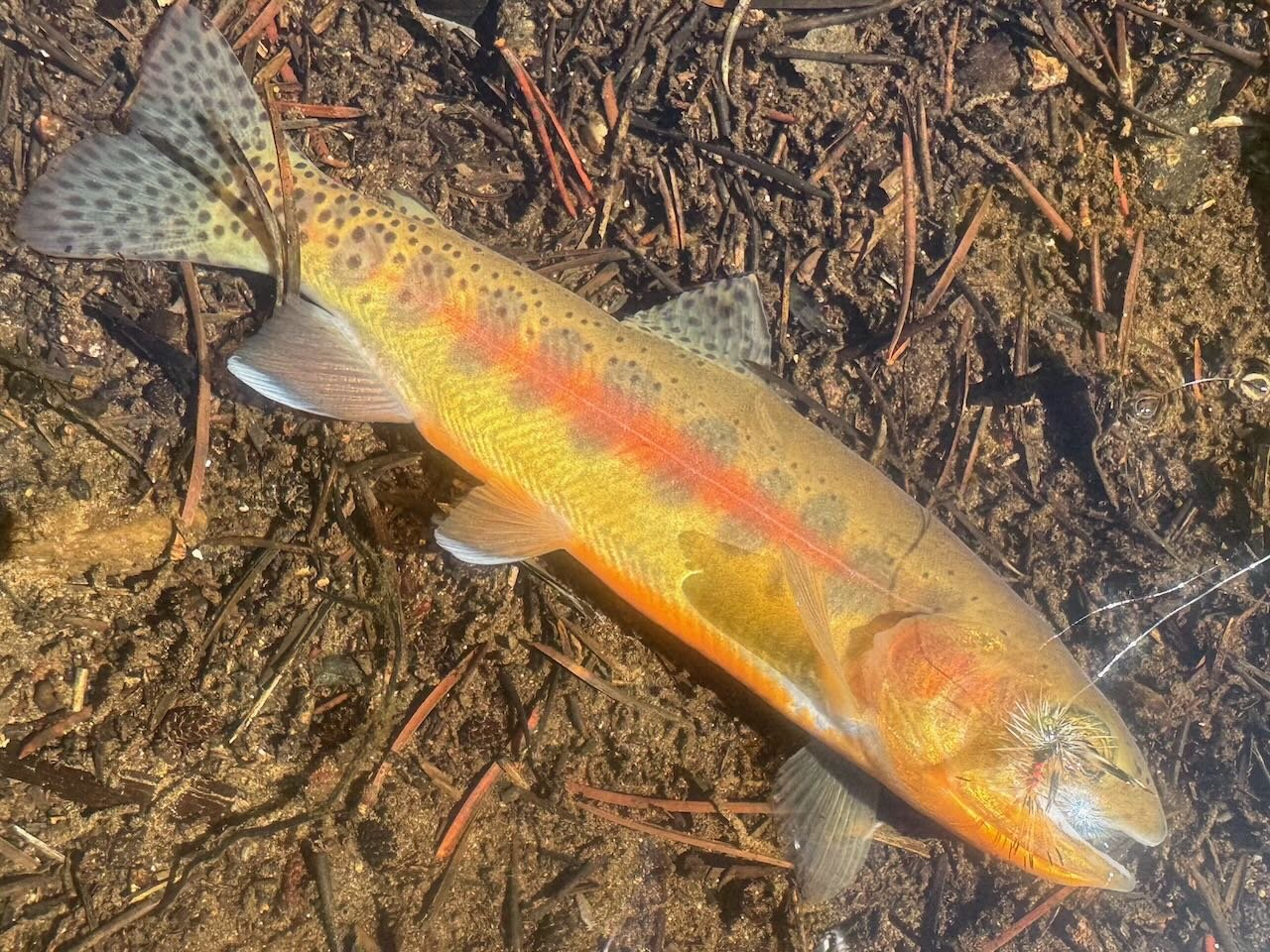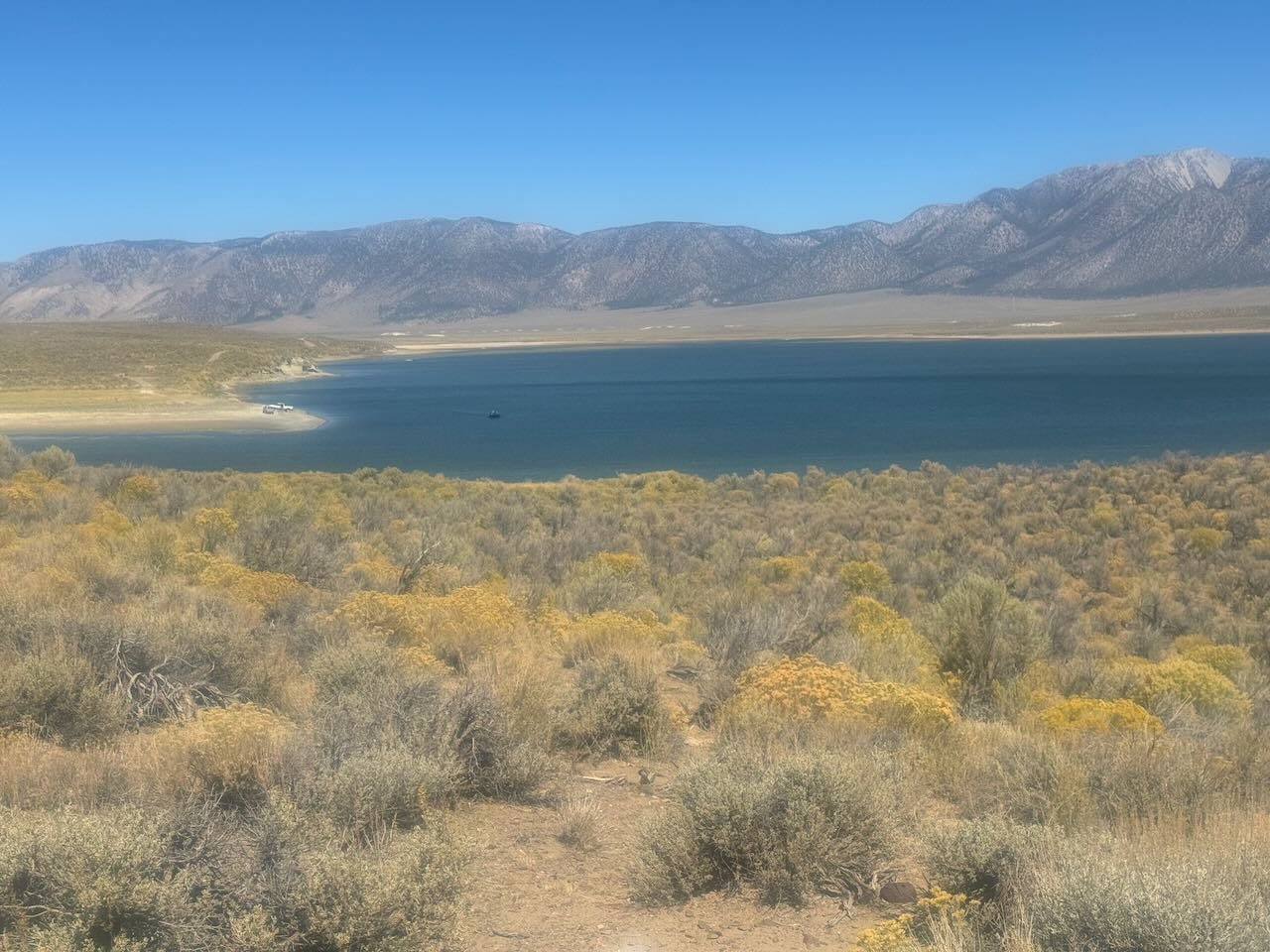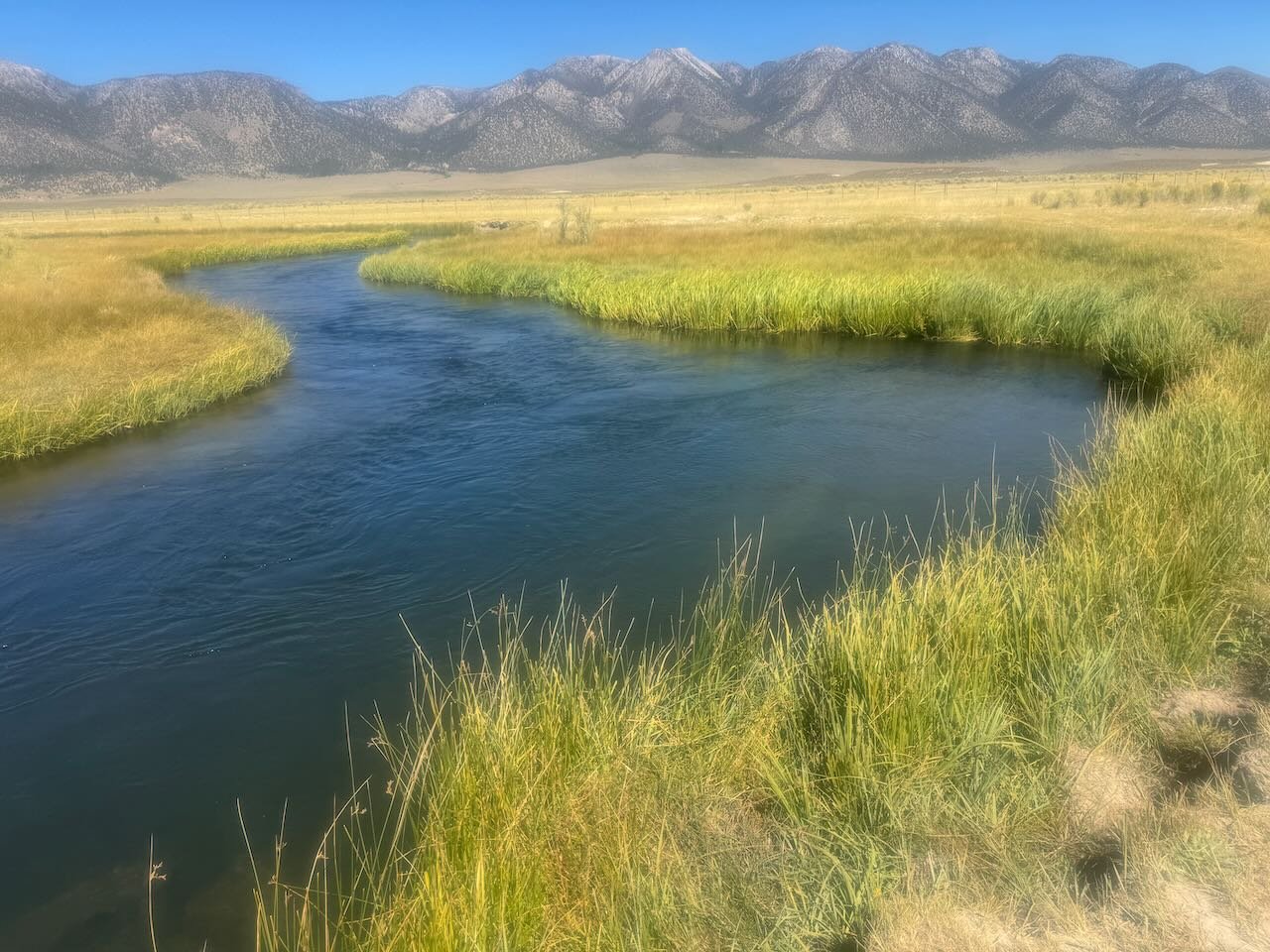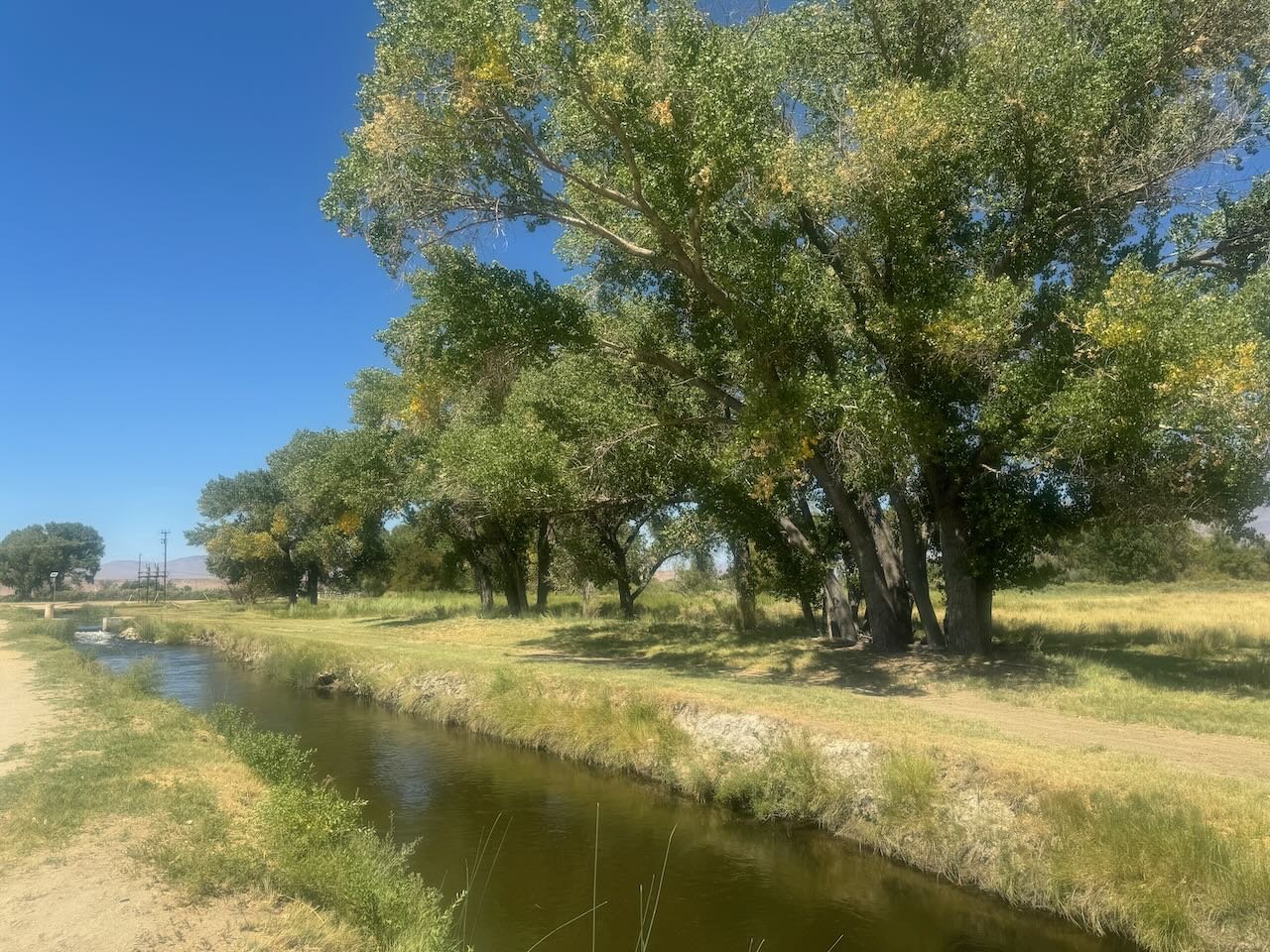I get asked all the time when is the best time to come to the Eastern Sierra to fly fish. The answer is now! My favorite month of the year in the Eastern Sierra starts on Sunday. The month is Sept-Oct. The 15th of September to the 15th of October. This time of the year offers the opportunity to catch spawning brook trout and trophy brown trout. It’s time for the trees to change from everyday green to brilliant colors of yellow, orange and red. Summers heat is behinds us and winters cold is on the horizon, but not yet here. Hatches of caddis, mayflies and midges are fueling the feeding trout. This is the time to fish meat. Big streamer patterns that big trout just cannot say no to. Before you know it snow will be on the ground making it impossible or very tough to fly fish lots of waters in the Sierra. So if you can get up here, now it’s the time to be fly fishing in the Eastern Sierra.
Golden trout call home at elevations above 8,000 feet and it will not be long before snow closes out access to these gorgeous trout.
Hot Creek
Interpretive Site:
Low water and spooky trout make fly fishing Hot Creek Interpretive Site very technical. An exact imitation of the stage of hatching insect and a drag free drift is what is needed to consistently be productive on the creek. Mornings start off with hatches of tricos. Look for caddis on the water and trout feeding on them early in the morning. The trico spinner fall follows the trico hatch and offers fly fishers the best opportunity to catch trout. Fly fishers using size 22 female trico parachutes, trico spinners and size 20 gray elk hair caddis are producing trout. Mid-morning to early afternoon is when the hatch is over. After the morning hatch try fly fishing with size 12 or 14 tan stimulators, tan parachute hoppers and tan Dave’s hopper. Late afternoon look for midge hatches. Try fishing a dry and dropper with a size 22 tiger midge under a size 16 Adams parachute.
Hot Creek is low and clear making it tough for fly fishers to get a drag free drift with their trico imitations in the morning.
Hot Creek
Canyon Section:
Weed beds in the shallows makes it tough to get a drag free drift. Fly fishers fishing with size 20 gray elk hair caddis, size 22 female parachute tricos and size 22 trico spinners are fooling trout in the mornings. Mid-afternoon fishing with a size 20 Griffiths gnat, or size 12 tan parachute hopper is bring a few fish to the surface to feed on these dry flies. Nymphing is tough with all the weeds. Fly fishers are having limited success nymphing the deeper pockets in the canyon with tiger midges, SOS nymphs, olive quilldigons and bead head flash back pheasant tail nymphs.
The flotilla of water craft have moved to the north arm of Crowley lake and most these craft are off the water by noon when the daily winds come up.
Crowley Lake
Mouth of the Owens River:
Fly fishers in boats, float tubes and kayaks are working midges in the north arm of the lake where there is a good concentration of trophy cutthroat, browns and rainbows. These fish are taking blood midges, Albino midges, tiger midges, zebra midges and gray midges. Working the weed beds with perch fry imitations like olive matukas, balance perch and wooly buggers is producing trophy trout that are cruising the weed beds looking for an easy meal
The water in the upper Owens River is running clear and cold and the trout are feeding on mayfly nymphs and caddis adults.
Upper Owens River
Above Benton Crossing Bridge:
Trophy brown and rainbow trout have not shown up in the river in big concentrations yet. Fly fishers need to cover lots of water if they are looking for a trophy trout. Six to 12 inch rainbows continue to offer the most activity in the river. These fish are feeding on hatching mayflies. Fish with size 18 bead head flash back pheasant tail nymphs, size 18 olive quilldigons, size 16 hot spot pheasant tail nymphs and size 16 tiger midges. Late afternoon especially when the wind comes up fish with size 16 elk hair caddis, size 16 Adams parachutes, size 12 tan parachute hoppers and size 14 tan stimulators. Wolly buggers and marabou muddlers in size 6 and 10 are producing trout when dead drifted against the opposite bank.
Bishop Creek Canal is fishable all day, but when the temperatures are hot it’s best to fish early or late in the day.
Bishop Creek Canal
Behind Bishop Veterinary Hospital:
The canal is producing good numbers of wild brown trout from eight to 12 inches. When the air temperatures stay below 90 degrees fly fishers can fish all day. When the temperatures get in the low 100’s it’s time to fly fish early or late in the day. Look for an early morning trico hatch. You will see the insects on the water, but the trout don’t start feeding on the tricos until the trico spinner fall happens. This takes place half to two thirds of the way through the hatch. Fish with size 22 female trico parachutes at the beginning of the hatch. Switch to a trico spinner when you see lots of fish feeding on the surface. The trico hatch is normally over by 10:00 A.M. Euro nymphing with size 18 olive quilldigons, size 12 stoners or green/gold Prince nymphs and size 16 hot spot pheasant tail nymphs are producing the wild brown trout and the stocked rainbow trout.





